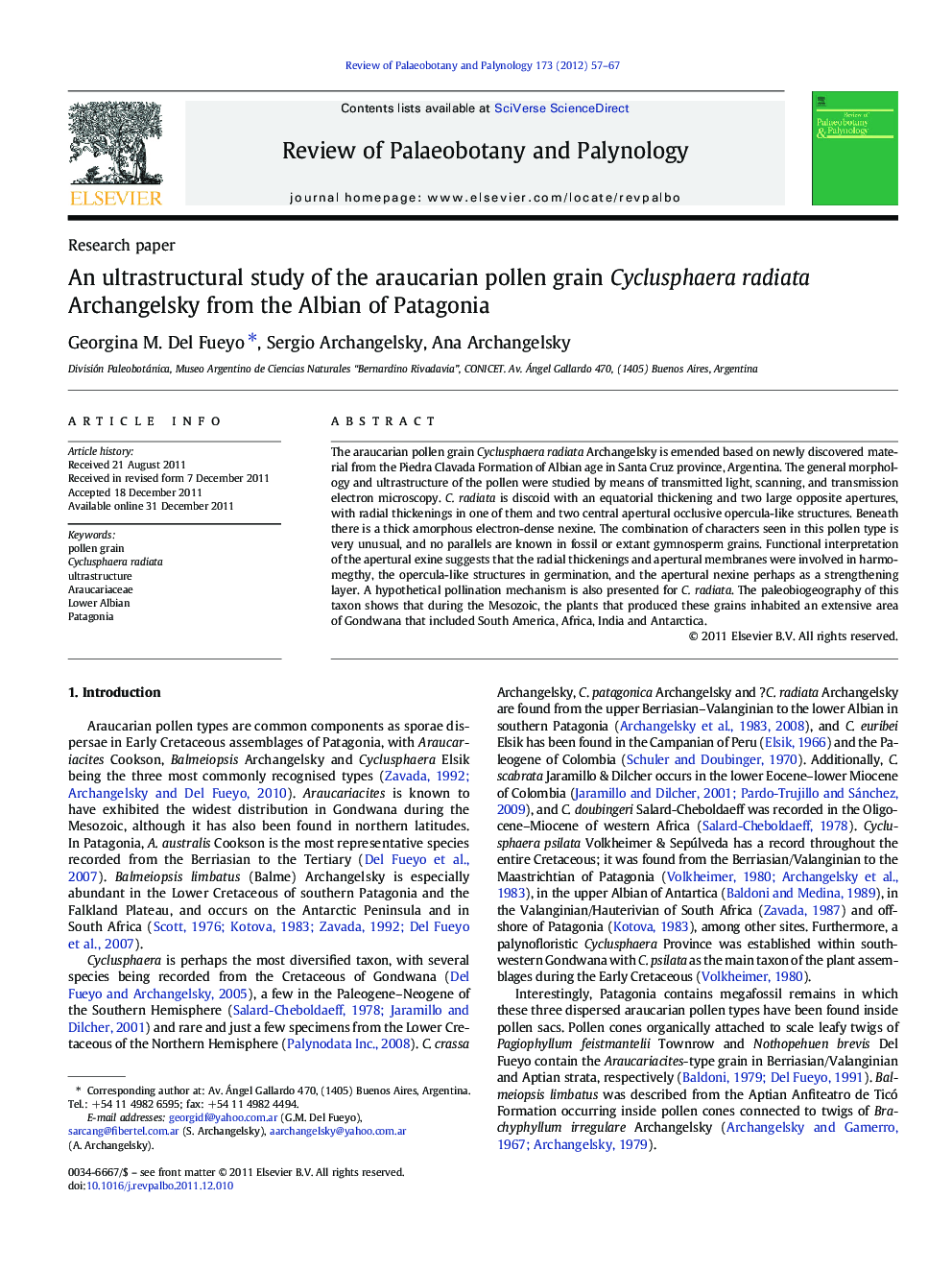| Article ID | Journal | Published Year | Pages | File Type |
|---|---|---|---|---|
| 4750469 | Review of Palaeobotany and Palynology | 2012 | 11 Pages |
The araucarian pollen grain Cyclusphaera radiata Archangelsky is emended based on newly discovered material from the Piedra Clavada Formation of Albian age in Santa Cruz province, Argentina. The general morphology and ultrastructure of the pollen were studied by means of transmitted light, scanning, and transmission electron microscopy. C. radiata is discoid with an equatorial thickening and two large opposite apertures, with radial thickenings in one of them and two central apertural occlusive opercula-like structures. Beneath there is a thick amorphous electron-dense nexine. The combination of characters seen in this pollen type is very unusual, and no parallels are known in fossil or extant gymnosperm grains. Functional interpretation of the apertural exine suggests that the radial thickenings and apertural membranes were involved in harmomegthy, the opercula-like structures in germination, and the apertural nexine perhaps as a strengthening layer. A hypothetical pollination mechanism is also presented for C. radiata. The paleobiogeography of this taxon shows that during the Mesozoic, the plants that produced these grains inhabited an extensive area of Gondwana that included South America, Africa, India and Antarctica.
Graphical abstractFigure optionsDownload full-size imageDownload as PowerPoint slideHighlights► The Cyclusphaera radiata Archangelsky structure from Patagonia-Albian is described. ► This taxon has two opercula-like structures, a thick nexine, and radial thickenings. ► These characters have not been seen in other living or fossil gymnosperm grains. ► They may have controlled hydration, harmomegathy, and germination during pollination. ► C. radiata inhabited an extensive area of Gondwana, during the Mesozoic.
